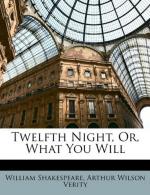|
This section contains 11,662 words (approx. 39 pages at 300 words per page) |

|
SOURCE: “Gender Trouble in Twelfth Night,” in Theatre Journal, Vol. 49, No. 2, May, 1997, pp. 121-41.
In the essay below, Charles maintains that Twelfth Night critiques Renaissance notions of masculinity and femininity, demonstrating that the dualism of homosexuality and heterosexuality is a social construct. He calls particular attention to the significance of Viola's cross-dressing, the instances of same-sex attraction between Viola and Olivia as well as Antonio and Sebastian, and the play's ending—which, in his judgment, subverts the notion of stable sexual and gender differences.
The emergence of queer studies in the academy has led to many influential rereadings of Renaissance works, including those of Shakespeare.1 While Twelfth Night continues to be one of the major textual sites for the discussion of homoerotic representation in Shakespeare, interpretive conclusions about the effect of same-sex attraction in this comedy are divided, especially in light of the natural “bias” of the heterosexual...
|
This section contains 11,662 words (approx. 39 pages at 300 words per page) |

|


